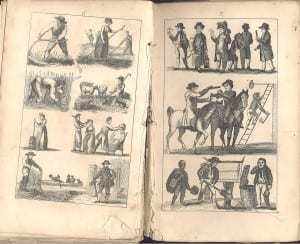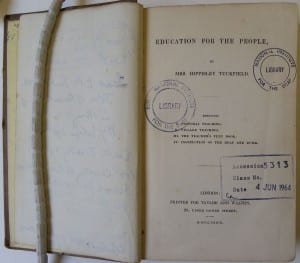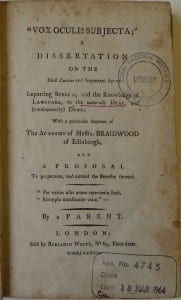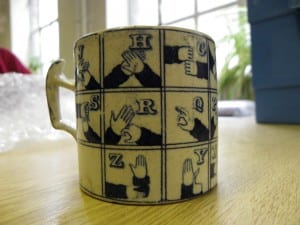A collection of the most remarkable definitions and answers of Massieu and Clerc, Deaf and Dumb, to the various questions put to them, at the public lectures of the Abbé Sicard, in London; to which are joined The manual alphabet of the Deaf and Dumb, the Abbé’s Introductory Discourse, and a letter explanatory of his system With notes and an English translation by J.H. Sievrac. London, printed four Massieu & Clerc by Cox & Baylis, 1815 by M. Laffon de Ladebat with notes and an English translation by J.H. Sievrac 1815
Jean Massieu (1772 –1846) was born Deaf and became a teacher of the Deaf. Louis Laurent Marie Clerc (1785 –1869),”The Apostle of the Deaf in America” was taught by Massieu and l’Abbé Sicard (1742-1822). Moving to the U.S.A. with Thomas Gallaudet, Clerc co-founded the school in Conneticut which is now The American School for the Deaf.
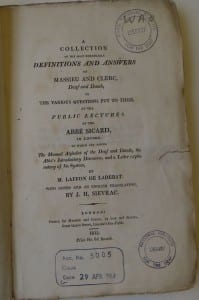 The author, André-Daniel Laffon de Ladebat (1746 –1829), philanthropist & banker, was himself a remarkable man. He was a protestant French noble who joined the revolution as a moderate, but fell out with both Napoleon and later the restored Bourbons. An early slavery abolitionist, in 1788 he wrote Discourse on the Necessity and the Means of Abolishing Slavery in the Colonies.
The author, André-Daniel Laffon de Ladebat (1746 –1829), philanthropist & banker, was himself a remarkable man. He was a protestant French noble who joined the revolution as a moderate, but fell out with both Napoleon and later the restored Bourbons. An early slavery abolitionist, in 1788 he wrote Discourse on the Necessity and the Means of Abolishing Slavery in the Colonies.
After an introductory lecture by Sicard, A collection of the most remarkable definitions and answers of Massieu and Clerc, Deaf and Dumb takes the form of a series of questions posed by various members of polite society answered by Massieu and Clerc, which illustrate their eloquence & high level of education.
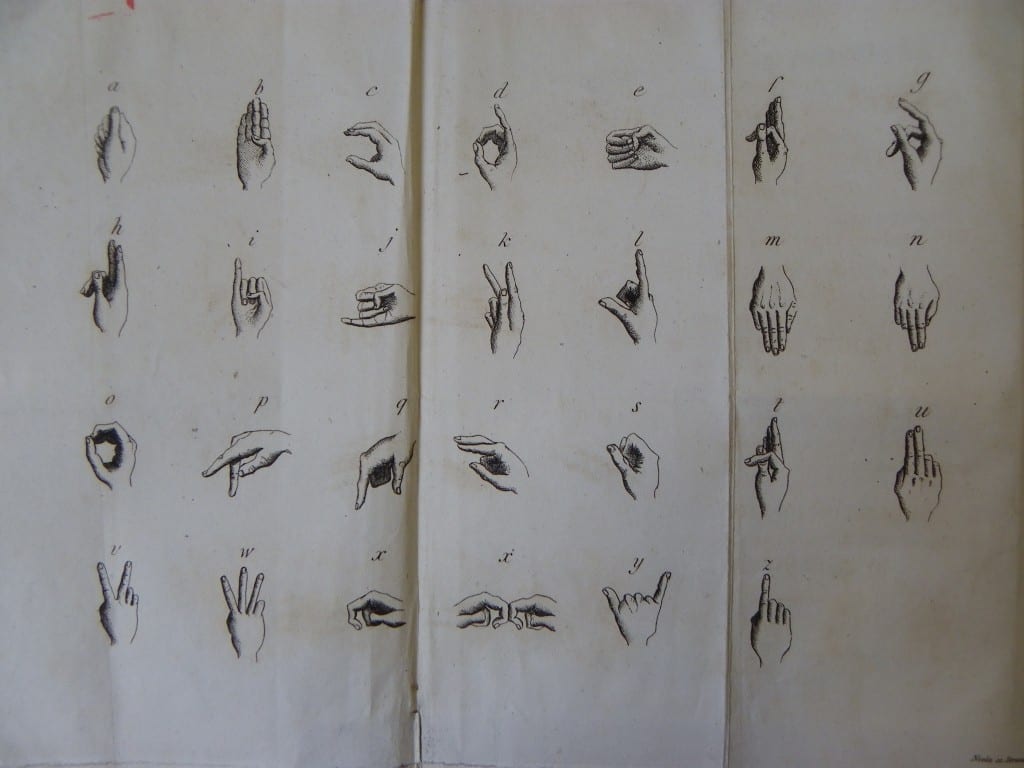 One of our copies of this book, not in this exhibition, has a letter from Sicard inside the front cover – see below. This copy was owned by Charles Rhind (here written ‘Rhynd’ by Selwyn Oxley) who we covered in an earlier post.
One of our copies of this book, not in this exhibition, has a letter from Sicard inside the front cover – see below. This copy was owned by Charles Rhind (here written ‘Rhynd’ by Selwyn Oxley) who we covered in an earlier post.
Very kindly, a translation has been made for us by Lucas Rivet-Crothers (with some additions by Mike Gulliver):
Comme tout le monde sait, mon respectable collègue, que toute votre vie se passe en bonnes œuvres et que par conséquent je ne dois ni ne puis l’ignorer, je puis donc sans indiscrétion vous adresser un des membres d’une famille nombreuse, une des plus dignes d’estime et d’intérêt que je connaisse qui deviendront le sauveur de la sienne si vous daigner lui procurer une place quelconque, quelque médiocre qu’elle fut, il fut dans sa première jeunesse dans les hôpitaux militaires, l’appui, le soutien, la consolation des infortunés confiés à ses soins. Son père, son frère, ses sœurs, tous les siens se sont montrés toujours des modèles de toutes les vertus civiles et religieuses. Permettez lui de vous entretenir, quelques instants, de leur fâcheuse position et daigner descendre jusqu’à lui et vous ne ferez pas sans en etre touché et sans lui tendre une main bienfaisante en protectrice…
To my esteemed colleague: As everyone knows, your life has been spent in good works, and this is something that I must not, indeed cannot, ignore. And so, without any feeling of discomfort, may I recommend to you a member of a large family (one of the most worthy of esteem and interest that I know) who would be the saviour of that family if you could provide him with a position, however humble it might be. In his younger years, he worked in military hospitals where he was a support and a consolation to those unfortunate enough to find themselves in his care. His father, his brother, his sisters, all of his kin have shown themselves to be models of civil and religious virtue. Converse with him for only a few minutes and he will tell you of the difficult position in which they find themselves. Engage with him and you will assuredly be moved by his predicament, and find yourself extending to him your protection and goodwill.
Click for a larger image.
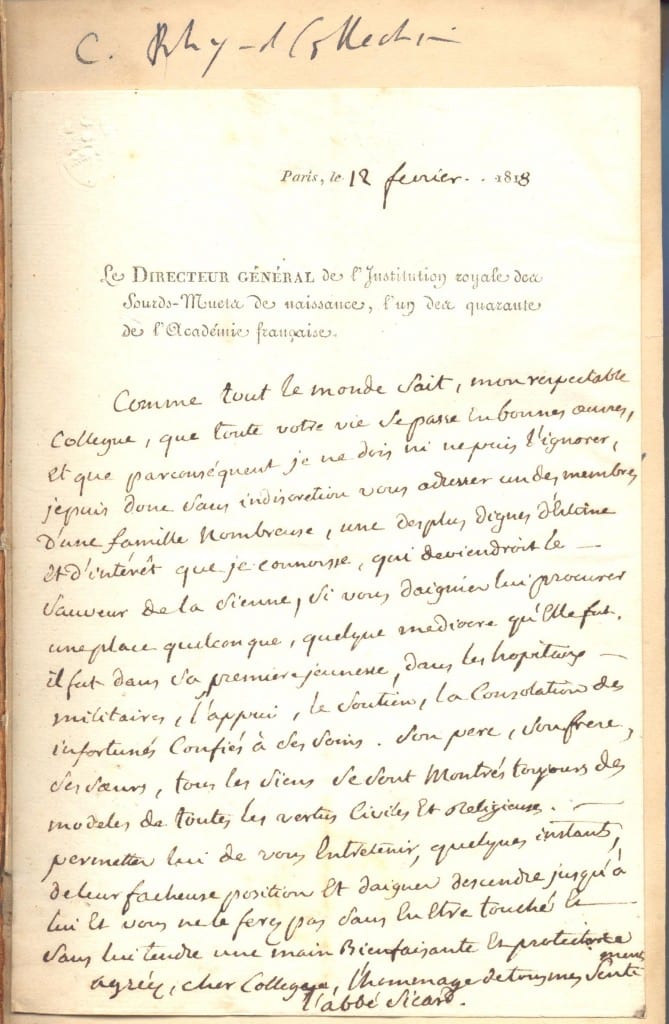
 Close
Close





